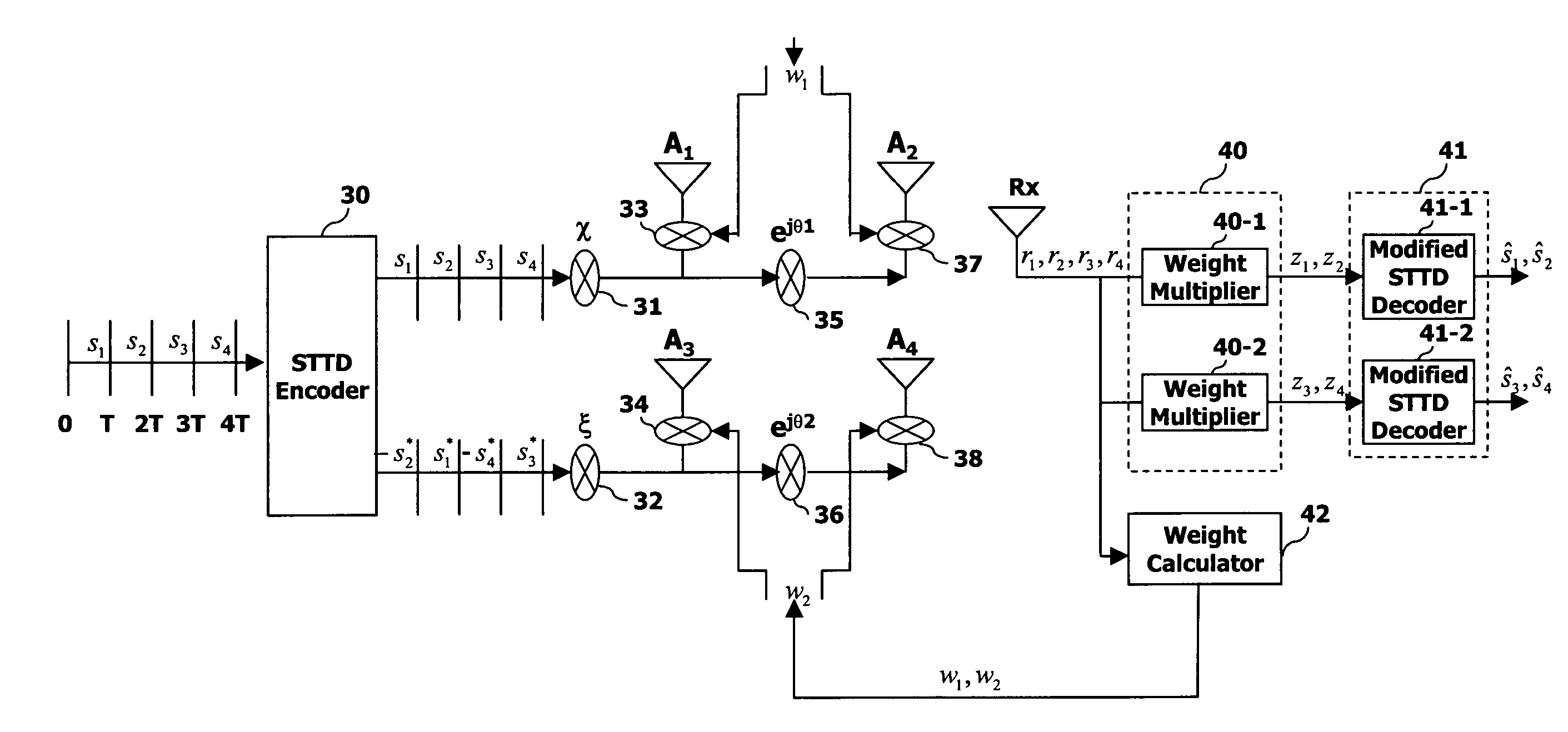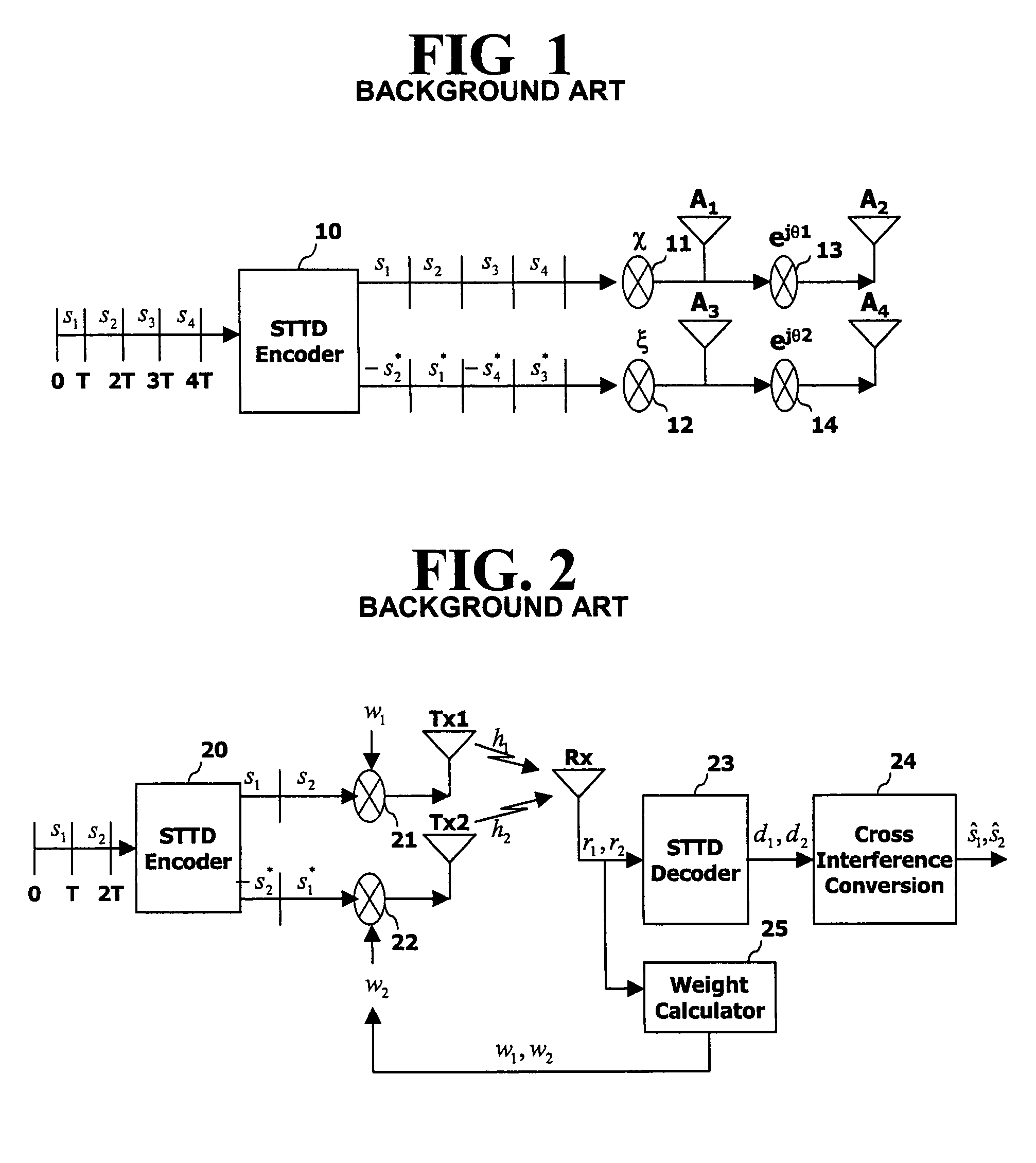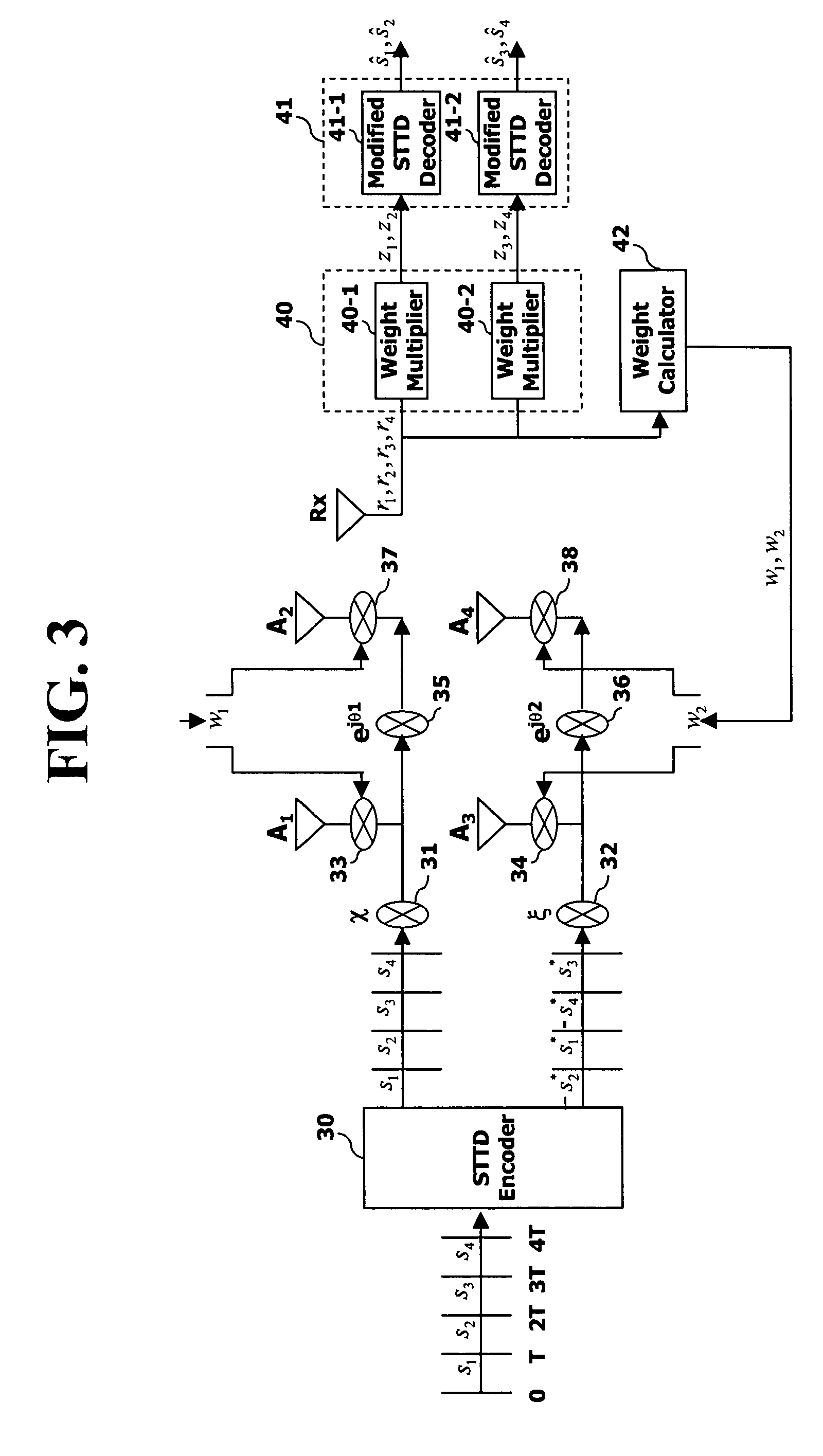Space-time transmit diversity (STTD) for multiple antennas in radio communications
a space-time transmit diversity and radio communication technology, applied in multiplex communication, modulation, electronic wave modulation, etc., can solve the problems of time diversity not being suitable for use in low-speed doppler spread channels, phase distortion of received signals, and inability to maximize the transmission power of symbols
- Summary
- Abstract
- Description
- Claims
- Application Information
AI Technical Summary
Benefits of technology
Problems solved by technology
Method used
Image
Examples
Embodiment Construction
[0078]The present invention is implemented in a mobile (radio or wireless) communication system, such as a universal mobile telecommunications system (UMTS), which has been developed by the 3GPP. Nevertheless, the present invention can be also applied to communication systems operating under different standards. In addition, the present invention can also be applied to a mobile communication system using a plurality of transmission antennas and a plurality of reception antennas.
[0079]In particular, the present invention includes an STTD transmitting end and an STTD receiving end, and uses in a closed-loop STTD adopting the antenna transmission diversity technique. In this case, the STTD transmitting end may be a base station (or Node-B), and the STTD receiving end may be a terminal (or User Equipment (UE)).
[0080]In the present invention, if the closed-loop STTD is applied to four transmission antennas, the signals transmitted from the four transmission antennas for each symbol recep...
PUM
 Login to View More
Login to View More Abstract
Description
Claims
Application Information
 Login to View More
Login to View More - R&D
- Intellectual Property
- Life Sciences
- Materials
- Tech Scout
- Unparalleled Data Quality
- Higher Quality Content
- 60% Fewer Hallucinations
Browse by: Latest US Patents, China's latest patents, Technical Efficacy Thesaurus, Application Domain, Technology Topic, Popular Technical Reports.
© 2025 PatSnap. All rights reserved.Legal|Privacy policy|Modern Slavery Act Transparency Statement|Sitemap|About US| Contact US: help@patsnap.com



